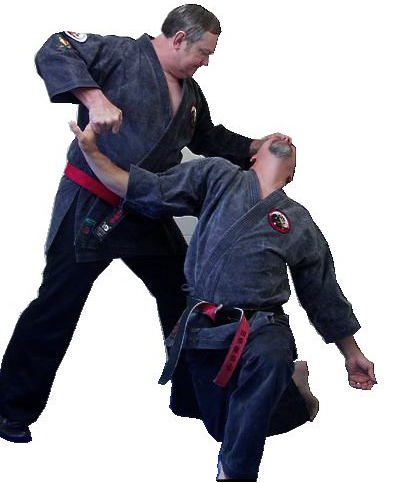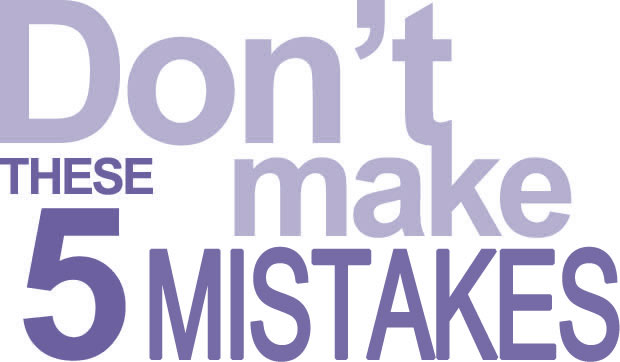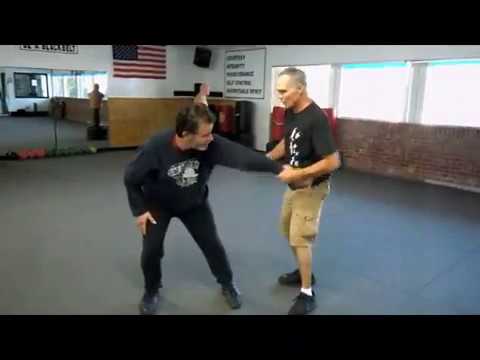I’m going to share with you how to avoid the 5 worst mistakes I have seen martial artists with their training. As a professional martial artists myself, I have a unique advantage point that allows me to see things the average practitioner doesn’t see until making one of these mistakes.
The most striking observation I could share with you is that there are a few training mistakes that are made by martial artists (of all styles) over and over. Some are merely an annoyance, and others can change the nature of their self defense knowledge and skill. Most can be easily avoided just by knowing what they are. That is my hope for you as you read this special report.
Instead of making this into a boring, formal report, I’d like to write to you as if we are talking together about your future in the martial arts – as we do all the time with our DSI Members. In the end, this really is about your training. So grab a cup of coffee or tea and let’s get started…
This special report isn’t long enough to get into lots of details from the experience of other martial artists, but we will look in summary form at the most common mistakes martial artists make so that you can avoid doing the same things.
I’d like to start with a question…
After years of working out, of squeezing your training in around your job, or running your own martial arts school, the endless distractions and daily frustrations – are you confident after taking that last class – you are learning what martial arts was intended?
No, I don’t mean whether you learned a proper block, punch and kick. I hope you’ve got those mechanics down cold.
I am asking if you are knowledgeable enough in the Martial Science department to be sure all the years of training have served you well? Or, if you are just starting in martial arts or mixed martial arts, understand how to make the best training choices for you.
These are the questions you need to begin to ask yourself now:
- What are you investing in your training?
- Who’s advice and expertise do you rely on for your training?
- How can you avoid making serious mistakes with what is one of the largest parts of your time and money?
- How can you make your training grow in a way that is safe and effective?
- What type of martial artists do you want to look like 5-10-20 years from now?
- What are the most common mistakes others have made?
Let’s look at your desired end…
Imagine for a moment that you are already a member of Dragon Society International and the martial artist you’ve always wanted to be. You’re looking back on your first year – all the way back to today. It’s been a good year. No, make that a great year. Your experience and momentum have changed, for one thing. You have time for those things that matter most in your life and your not wasting it on training that won’t support the goals you’ve set for yourself.
You think about your training. You smile. You avoided the worst mistakes many martial artists you know made. But you’ve done more than avoid mistakes. Your smile grows. It’s investing in yourself. It’s growing your martial science knowledge. “Why did I wait so long to do this? you ask.
Now, jump ahead a few years…
You are content with your training – enjoying every moment of it with intensity and purpose. The smile is back. You look forward towards the future with a strong feeling of accomplishment. You are now a DSI Certified Instructor, desired all throughout the martial arts world. And your students who you train now know you are an authority on the subject of martial science. They know exactly who to learn the art and skill to better themselves…without hesitation. You can now look back and feel confident that you made the right decision in your training.
This can be You!
I write that last sentence with confidence because DSI has walked many martial artists through the process in their own training. The description above comes directly from the comments I hear regularly from DSI members and Certified Instructors. Most importantly, it can describe you too.
That’s if you avoid the mistakes most martial artists make in their training. And beyond avoiding mistakes, you want your training to grow and increase in a way that can change the rest of your life.
So, let’s take a look at “The 5 Worst Mistakes Martial Artists Make in Their Training.”
Worst Mistake #1
Waiting Too Long to Learn the “How” and “Why” of Your Art
Have you been training for a while? How you ever wondered why your instructor did certain things? Were you not allowed to question him or her? Are there certain moves or self defense techniques that just do not make sense or feel natural?
Dragon Society International explains and those questions plagued by martial artists of all styles. Especially the “How” and “Why” to any art. It is in the mechanics and principles that unravel the mystery of why we move here or punch there. DSI is your blueprint of martial science.
Worst Mistake #2
Listening to Way Too Many Differing Opinions as to Which Art is Superior
The most superior art is the one that works for you. The one you feel most natural doing. Why should you change something that works for you and your ability? You shouldn’t. No matter what influences you see around you, your art is who you are. It’s a part of you. It resonates with you. Don’t change it. Improve on your art. That is what DSI brings to the table. Enhancement of your existing art.
Worst Mistake #3
Piloting Your training Solo
There are many basement and garage practitioners trying to figure the Martial Arts out on their own. Their is a home for you, if you are one of them and feel like you can’t mesh with any style. DSI principles and ‘players to the game’ will reassure your love of the martial arts and still give you the freedom to learn the way you want to…without boundaries!
Worst Mistake #4
Failing to Take Full Advantage of Information
What happens when you do take action on the info you are given? You do take advantage of the information you’ve learned up until this point…don’t you? We can’t make you train, but we can give you unparalleled information and support that goes along with DSI and your training.
Worst Mistake #5
Doing the Same Thing Over and Over Expecting Different Results
I have read that this is the definition of insanity. You aren’t satisfied with your level of self defense but instead you do nothing to change it. Instead, you follow along blindly hoping for enlightenment. That day will not come unless you take advantage of opportunities for your own training. DSI works with martial artists who’s training has gotten ‘stuck’ for lack of a better term, build them up, and now they have become our greatest success stories.
Ok, time for a pop quiz: How many of these mistakes would you have avoided? Will you avoid?
The good news is you now know of the “Top 5 Worst Mistakes Martial Artists Make with their Training.”
The bad news is that there is no shortage of ways to make mistakes. If space permitted, we could cover a pile more. Never-the-less, this is a good place to start your thinking.
There’s one thing this post cannot do…
That’s to evaluate your individual situation – where you are in your training and where you want to take it.
There are several benefits to becoming a DSI member:
- Answer your questions
- Help you get in touch with like-minded martial artists who love martial science as much as you do.
- Provide you with the information necessary to empower your skills and improve your training.
- Show you ways to become a professional martial artists with Certified Training and business know-how.
I wish you mistake free training! I hope you have enjoyed this post and I look forward to seeing you at DSI seminars and special events.







